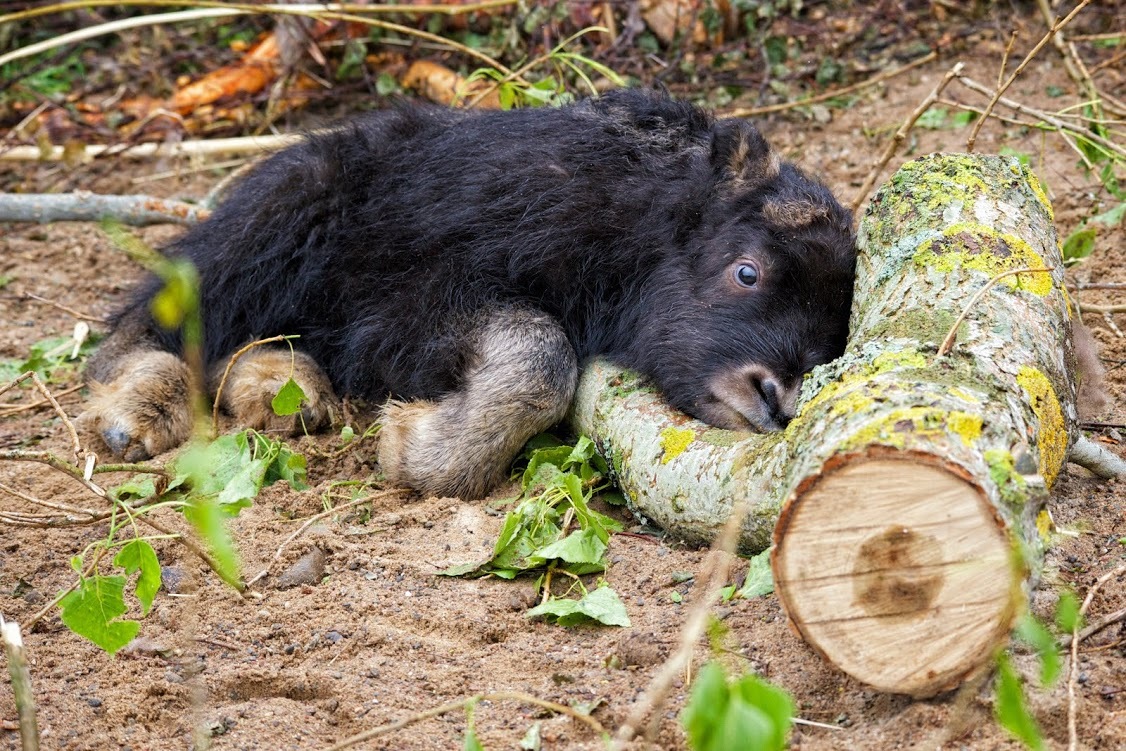He may be small but this tiny calf is carrying a lot of expectation on his shoulders.
The baby musk-ox has delighted keepers at the Highland Wildlife Park, who are now hoping fervently that he grows up big and strong.
The species is notoriously difficult to rear in captivity as the youngsters’ weak immune systems make them highly susceptible to disease and infection.
The last calf to survive until adulthood in the UK was born in 1992.
Another drawback is the aggressiveness of the adults. The last musk-ox calf to be unveiled at the Highland Wildlife Park – a female named Belle – died at the age of five months from an injury inflicted by one of her parents.
Douglas Richardson, Head of Living Collections at Highland Wildlife Park, said keepers would be doing everything possible to ensure their new arrival has a happier fate.
“Although we are very pleased with our latest musk-ox calf, we are certainly not out of the woods yet and have a long way to go before we can confidently say that we have been successful,” he said.
“He is growing well and is being closely monitored by his keepers, but the young of the species are extremely fragile and in light of losing last year’s calf, we have altered our husbandry protocol to hopefully avoid a similar problem.
“He will remain off show with his mother for some time yet and will be named at a later date.”
The calf’s mother, a female named Karin, was born in the Czech Republic in 2002.
She and her VIP offspring will be gradually set loose in their large grass enclosure before being introduced to the youngster’s father.
A social species native to the Arctic, musk-ox typically form mixed herds of 10 to 20 animals, sometimes rising to as many as 100.
Hunted almost to extinction for their fur and meat, a combination of conservation regulation, reintroductions and natural recolonisation mean they are now classified as being of least concern on the IUCN Red List.
